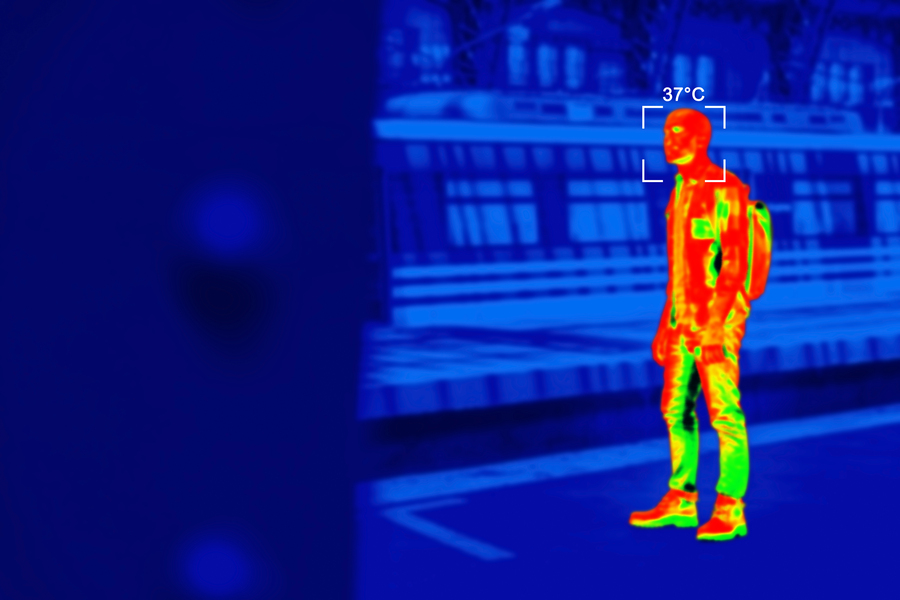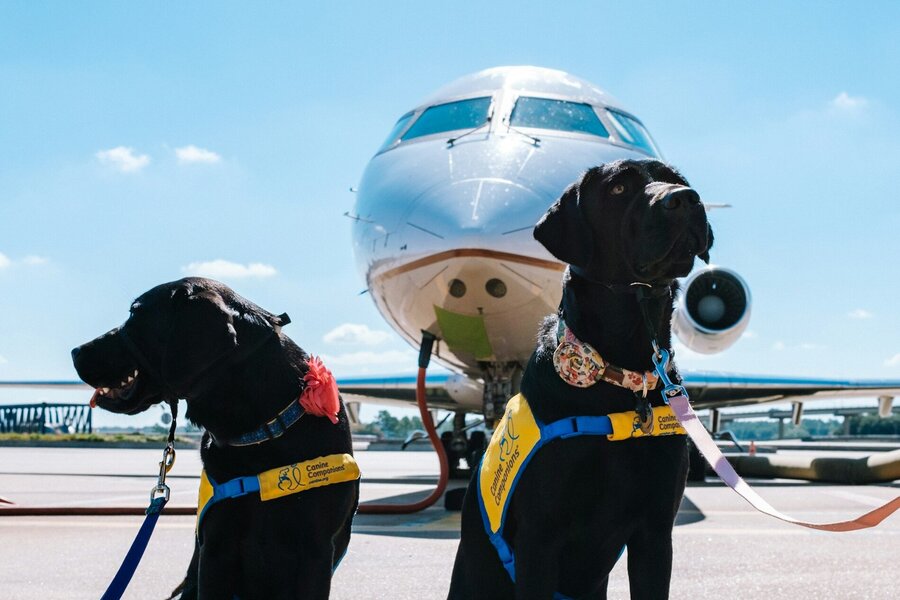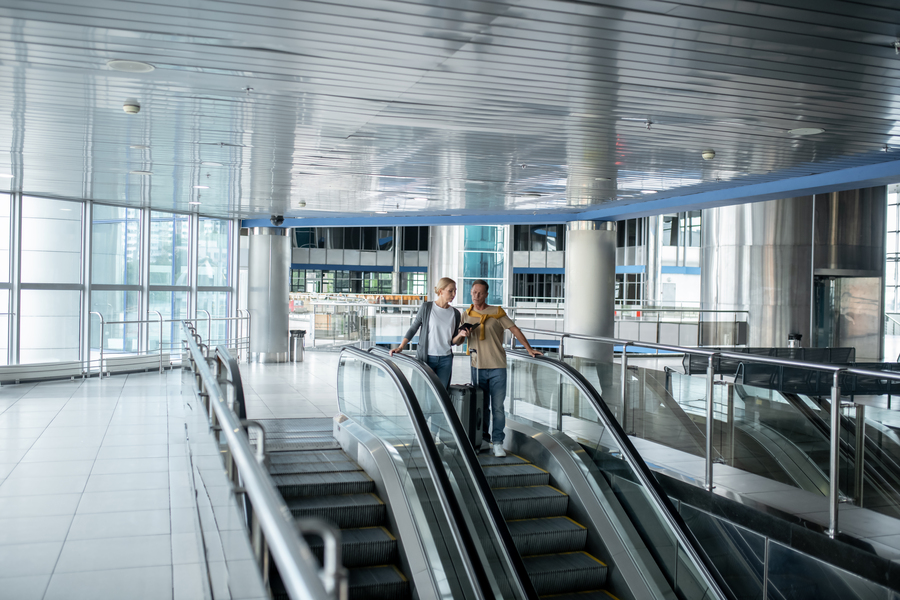We all know that the tight security at airports is there to keep us safe. But have you ever wondered how it all works? Learning about the airport security process can help make your travel experience easier and quicker. So, let's dive right in!
So here's all the nitty-gritty of airport security…
 Source: freepik/Freepik
Source: freepik/Freepik
Whole-body scanners
If you haven't had the chance to go through a full-body scanner yet, you're in for a unique experience. You'll hear the scanner making a whooshing sound as you stand inside the large plastic tube with your arms raised.
Full-body scanners are used to detect potentially dangerous items and contraband, such as weapons, explosives, and drugs hidden under people's clothing. While there are a few different types of these scanners, the most common one is the millimeter wave scanner. It uses a special form of electromagnetic wave to identify a wide range of items, from knives and guns to plastic explosives and drugs hidden on travelers' bodies. Although the idea of electromagnetic waves passing through your body might be a bit unsettling, full-body scanners are considered completely safe and offer a more accurate and less invasive alternative to pat-downs or "frisks".
Full-body scanners are now a regular feature in US airports, and travelers passing through airports with these scanners will be subject to scanning unless they specifically inform a TSA agent that they want to opt out. Those who choose to opt out will instead be given a traditional pat-down. While the current scanners can only process 2 or 3 people per minute, a new type of rapid body scanner is currently being tested at Denver International Airport (DEN), which can scan people in less than a second.
Limits on liquids in carry-on bags
Whether you've quickly gulped down a bottle of water before going through security or had your hand cream examined by airport staff, you've probably experienced the rules about liquids in your carry-on bag firsthand.
If you're packing items in your hand luggage that are considered liquids, creams, or gels, they usually have to be "travel size," which means less than 100 ml. You'll need to take those items out of your luggage for the scanning process, and in some cases, put them in a clear plastic ziplock bag, so the security staff can see exactly what liquids and how much you're bringing on board.
A new type of scanner is currently being tested at Heathrow Airport (LHR) that might speed up the process. More advanced scanning technology could eliminate the need for travelers to remove liquids, electronics, and laptops from their bags during security.
Trace detection with swabs
You've put your carry-on bag and liquids through the security checkpoint and gone through the metal detector or full-body scanner. Just as you're about to grab your bag, a security officer pulls it off the conveyor belt. The officer swabs the outside of your bag thoroughly, and then inserts the swab into a machine.
This process is called explosive trace detection. It checks if your bag has come into contact with a bomb or explosive material. The machine analyzes the swab for tiny amounts of explosives, which could mean the bag held a restricted item. Swabbing is done not just on bags, but also on travelers' clothing and hands.
Swabbing is used along with full-body scanners to detect explosives. While it can be a bit unsettling, a positive swab test isn't cause for alarm. Some common chemicals they test for, like those in soap and shampoo, can trigger false positives.
 Source: Jeswin Thomas/Unsplash
Source: Jeswin Thomas/Unsplash
Biometric identification
Identity checks are a common part of air travel today. You'll encounter them when checking in, going through customs, and boarding your flight. These checks are still mostly done by humans, but biometric control gates, also known as "E-Gates," are becoming more popular.
If you're going through customs using an E-Gate, you'll need to insert your passport into a machine. The machine will scan your face and run an algorithm to verify your identity. If the country you're entering requires facial photos and fingerprints, those will be taken as part of the process.
Identity checks are the most strictly enforced airport security measure today, but that wasn't always the case. In the 1950s and 1960s, if you were flying domestically within the United States, you didn't have to show any ID at all. You could simply show up at the gate with your ticket, much like taking a bus or train.
Mandatory ID checks for all domestic US flights started in the 1990s and they're here to stay. In fact, the ID requirements for domestic flights in the United States are becoming even stricter. As of 2020, travelers will need to show a Real ID-compliant form of identification.
Detection dogs or "sniffer dogs"
When a cute little beagle wanders over to your luggage, wagging its tail and full of energy, it's hard not to want to give it a good scratch behind the ears. But the dog is on a mission, so it's best to step back and let it do its job.
People often think that the sniffer dogs at airports are only looking for one thing – drugs. While some dogs do search for those illegal substances, they may also be looking for a variety of other items, such as explosives, live animals, animal waste, organic material, ivory, currency, blood, and electronic contraband.
Sniffer dogs were first used by the US army in the 1940s to detect German mines in North Africa, and by the 1970s, they were widely used to find illegal substances in the United States. The dog's incredible sense of smell allows it to find items and substances that other detection methods might miss, making them an excellent additional security measure at airports.
It seems there's no limit to what a dog's nose can detect. The UK is currently studying the use of detection dogs to help prevent the spread of malaria, and a spaniel at a Canadian hospital has been trained to sniff out superbugs.
The coming changes in airport security
The last few years have seen airport security become stricter. However, the future of airport security will be about making the current processes more efficient and reducing wait times.
At a recent event in London, industry experts saw demonstrations of promising new technologies. These included a pad that could detect explosives in shoes while travelers were waiting in line. There was also a more advanced full-body scanner that would let passengers keep their coats on and not have to empty their pockets.
With these exciting new developments, the future of air travel security is looking to become much more efficient, without compromising safety.
The airport parking solution: search, book and relax with ParkingNearAirports.io!

Source: inkevych/Freepik
Airport parking can be a real hassle. The struggle to find a spot, the high prices, and the chance of your car getting damaged can really mess up your travel plans. But it doesn't have to be this way! With some planning and the right information, you can find parking that's easy on your wallet and your peace of mind for your next trip.
There's a smarter solution: off-site airport parking with our booking platform, ParkingNearAirports.io! We offer secure parking facilities located near major airports across the United States and Canada, all at a fraction of the on-site price. Plus, you might find the best airport parking deals and airport parking coupons to stretch your travel budget even further!
Finding a great deal is simple. Firstly, visit our user-friendly website: https://parkingnearairports.io/. Search for "airport parking near me" and compare options from various providers. You'll find transparent pricing with clear details on amenities and distance from the airport.
Ready to book? Visit ParkingNearAirports.io now!






